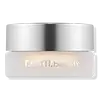What's inside
What's inside
 Key Ingredients
Key Ingredients

 Benefits
Benefits

 Concerns
Concerns

 Ingredients Side-by-side
Ingredients Side-by-side

Water
Skin ConditioningDimethicone
EmollientTalc
AbrasiveDicaprylyl Carbonate
EmollientIsostearyl Neopentanoate
EmollientPEG-10 Dimethicone
Skin ConditioningDimethicone/Vinyl Dimethicone Crosspolymer
Skin ConditioningGlycerin
HumectantTrimethylsiloxysilicate
EmollientIsododecane
EmollientBis-PEG/PPG-14/14 Dimethicone
EmollientPhenoxyethanol
PreservativeSodium Chloride
MaskingDimethicone Crosspolymer
Emulsion StabilisingMagnesium Sulfate
Hydrogen Dimethicone
Sodium Dehydroacetate
PreservativeTrehalose
HumectantUrea
BufferingPotassium Sorbate
PreservativeSilica
AbrasiveDisteardimonium Hectorite
StabilisingAluminum Hydroxide
EmollientBenzoic Acid
MaskingSodium Hyaluronate
HumectantC24-28 Alkyl Methicone
EmollientPentylene Glycol
Skin ConditioningSerine
MaskingDehydroacetic Acid
PreservativePropylene Carbonate
SolventEthylhexylglycerin
Skin ConditioningAlgin
MaskingCaprylyl Glycol
EmollientDisodium Phosphate
BufferingGlyceryl Polyacrylate
Pullulan
Tocopherol
AntioxidantPotassium Phosphate
BufferingIron Oxides
CI 77891
Cosmetic ColorantWater, Dimethicone, Talc, Dicaprylyl Carbonate, Isostearyl Neopentanoate, PEG-10 Dimethicone, Dimethicone/Vinyl Dimethicone Crosspolymer, Glycerin, Trimethylsiloxysilicate, Isododecane, Bis-PEG/PPG-14/14 Dimethicone, Phenoxyethanol, Sodium Chloride, Dimethicone Crosspolymer, Magnesium Sulfate, Hydrogen Dimethicone, Sodium Dehydroacetate, Trehalose, Urea, Potassium Sorbate, Silica, Disteardimonium Hectorite, Aluminum Hydroxide, Benzoic Acid, Sodium Hyaluronate, C24-28 Alkyl Methicone, Pentylene Glycol, Serine, Dehydroacetic Acid, Propylene Carbonate, Ethylhexylglycerin, Algin, Caprylyl Glycol, Disodium Phosphate, Glyceryl Polyacrylate, Pullulan, Tocopherol, Potassium Phosphate, Iron Oxides, CI 77891
Isodecyl Neopentanoate
EmollientCaprylic/Capric Triglyceride
MaskingDicalcium Phosphate
AbrasiveBis-Behenyl/Isostearyl/Phytosteryl Dimer Dilinoleyl Dimer Dilinoleate
EmollientIsononyl Isononanoate
EmollientPolyethylene
AbrasivePolybutene
Silica
AbrasiveZinc Stearate
Cosmetic ColorantDipentaerythrityl Hexahydroxystearate
EmulsifyingDisteardimonium Hectorite
StabilisingPentaerythrityl Tetra-Di-T-Butyl Hydroxyhydrocinnamate
AntioxidantMethicone
EmollientAlcohol
AntimicrobialWater
Skin ConditioningTocopherol
AntioxidantEthylhexyl Palmitate
EmollientRubus Idaeus Leaf Extract
Skin ConditioningTrihydroxystearin
Skin ConditioningWithania Somnifera Root Extract
Skin ConditioningSodium Hyaluronate
HumectantCI 77891
Cosmetic ColorantIron Oxides
CI 77007
Cosmetic ColorantIsodecyl Neopentanoate, Caprylic/Capric Triglyceride, Dicalcium Phosphate, Bis-Behenyl/Isostearyl/Phytosteryl Dimer Dilinoleyl Dimer Dilinoleate, Isononyl Isononanoate, Polyethylene, Polybutene, Silica, Zinc Stearate, Dipentaerythrityl Hexahydroxystearate, Disteardimonium Hectorite, Pentaerythrityl Tetra-Di-T-Butyl Hydroxyhydrocinnamate, Methicone, Alcohol, Water, Tocopherol, Ethylhexyl Palmitate, Rubus Idaeus Leaf Extract, Trihydroxystearin, Withania Somnifera Root Extract, Sodium Hyaluronate, CI 77891, Iron Oxides, CI 77007
 Reviews
Reviews

Ingredients Explained
These ingredients are found in both products.
Ingredients higher up in an ingredient list are typically present in a larger amount.
Ci 77891 is a white pigment from Titanium dioxide. It is naturally found in minerals such as rutile and ilmenite.
It's main function is to add a white color to cosmetics. It can also be mixed with other colors to create different shades.
Ci 77891 is commonly found in sunscreens due to its ability to block UV rays.
Learn more about CI 77891Disteardimonium Hectorite comes from the clay mineral named hectorite. It is used to add thickness to a product.
It can also help stabilize a product by helping to disperse other ingredients.
Hectorite is a rare, white clay mineral.
Learn more about Disteardimonium HectoriteSilica, also known as silicon dioxide, is a naturally occurring mineral. It is used as a fine, spherical, and porous powder in cosmetics.
Though it has exfoliant properties, the function of silica varies depending on the product.
The unique structure of silica enhances the spreadability and adds smoothness, making it a great texture enhancer.
It is also used as an active carrier, emulsifier, and mattifier due to its ability to absorb excess oil.
In some products, tiny microneedles called spicules are made from silica or hydrolyzed sponge. When you rub them in, they lightly polish away dead skin layers and enhance the penetration of active ingredients.
Learn more about SilicaSodium Hyaluronate is hyaluronic acid's salt form. It is commonly derived from the sodium salt of hyaluronic acid.
Like hyaluronic acid, it is great at holding water and acts as a humectant. This makes it a great skin hydrating ingredient.
Sodium Hyaluronate is naturally occurring in our bodies and is mostly found in eye fluid and joints.
These are some other common types of Hyaluronic Acid:
Learn more about Sodium HyaluronateTocopherol (also known as Vitamin E) is a common antioxidant used to help protect the skin from free-radicals and strengthen the skin barrier. It's also fat soluble - this means our skin is great at absorbing it.
Vitamin E also helps keep your natural skin lipids healthy. Your lipid skin barrier naturally consists of lipids, ceramides, and fatty acids. Vitamin E offers extra protection for your skin’s lipid barrier, keeping your skin healthy and nourished.
Another benefit is a bit of UV protection. Vitamin E helps reduce the damage caused by UVB rays. (It should not replace your sunscreen). Combining it with Vitamin C can decrease sunburned cells and hyperpigmentation after UV exposure.
You might have noticed Vitamin E + C often paired together. This is because it is great at stabilizing Vitamin C. Using the two together helps increase the effectiveness of both ingredients.
There are often claims that Vitamin E can reduce/prevent scarring, but these claims haven't been confirmed by scientific research.
Learn more about TocopherolWater. It's the most common cosmetic ingredient of all. You'll usually see it at the top of ingredient lists, meaning that it makes up the largest part of the product.
So why is it so popular? Water most often acts as a solvent - this means that it helps dissolve other ingredients into the formulation.
You'll also recognize water as that liquid we all need to stay alive. If you see this, drink a glass of water. Stay hydrated!
Learn more about WaterThis ingredient is a combination of red, black, and yellow iron oxide pigments. This combination of colors is usually found in foundation, because it results in a "skin" color.